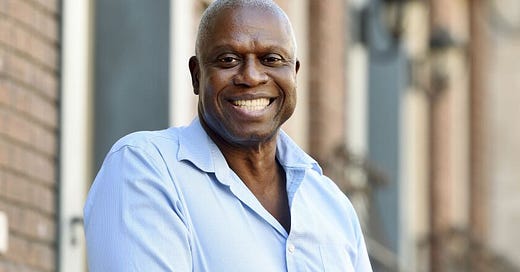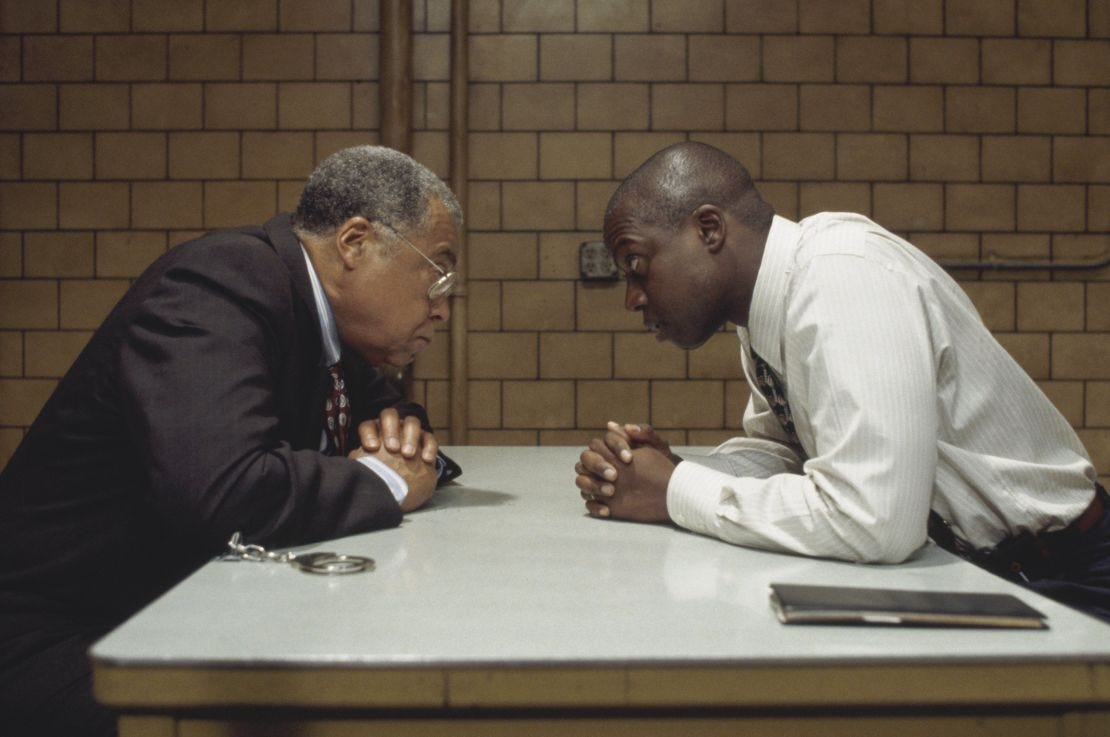I mean no disrespect to Andre Braugher, who died Tuesday at only 61, in calling him the best television actor of his generation. Of course Braugher had a long list of movie credits, from his breakout role alongside Denzel Washington in “Glory” to his role last year in “She Said,” credibly playing a New York Times editor who is unfazed when an angry Harvey Weinstein is on the line. Simply put, he made everything he was in better, and you paid closer attention whenever he was onscreen.
But it was television that gave Braugher the opportunity to really show all he can do, and two roles – one dramatic, one comedic – that remain indelible.
There was simply nothing like Andre Braugher on the small screen when “Homicide: Life on the Street” premiered on NBC in 1993. As star detective Frank Pembleton, the Julliard-trained Braugher was ferocious, brilliant, playful and soulful. Pembleton would turn the ugly yellow-tiled interrogation room in the precinct into his own personal black-box theater (they even called it “the Box”), staging virtuoso two- or three-man plays in which Pembleton cajoled, bullied, outwitted or pleaded to get a confession out of a suspect.
The classic first-season episode “Three Men and Adena” is rightly called a series highlight for this, although I fondly remember the episode where Braugher broke down a young Paul Giamatti, or the one where he counseled a young Vincent D’Onofrio who was pinned by a subway car. (That’s right, a young Paul Giamatti. A young Vincent D’Onofrio. What a show “Homicide” was.)
Braugher had complete control of every sentence, every syllable of his lines, his voice a beautiful and at times terrifying instrument. You just loved to listen to him, whether he was riding the cadences of a long monologue or batting lines back and forth with another cast member, like his naive partner Bayliss (Kyle Secor).
Pembleton was the star player of the show, which is why it was so interesting that, later in the show’s run, the creators had the character suffer a stroke and lose much of that verbal agility. Maybe it was a decision to rebalance the show into more of an even-handed ensemble. Or maybe Braugher, having conquered the role in one way, wanted a new kind of acting challenge. I suspect the latter. He seemed to love his work too much to repeat himself.
He certainly looked for new challenges when he left “Homicide,” which brings us to “Brooklyn Nine-Nine.” Same actor, same tools, same command of the screen, only now as Captain Holt he had recalibrated his instrument not to be fearsomely dramatic but deeply funny. He made gravitas hilarious, and he gradually revealed the sweetness inside the gruff father figure of the precinct.
Both “Homicide” and “Brooklyn Nine-Nine” showcase why Braugher was particularly well-suited for television. He would pop in individual moments in nearly every episode he was in. But he also paid attention to the long game, developing and deepening a character’s relationship with the viewer over the course of several seasons.
Two other great Braugher TV roles that I think may be overlooked. He was wonderful in the two-season run of “Men of a Certain Age,” playing an insecure car salesman working for his father. The role, alongside Ray Romano and Scott Bakula, was poignant and humane, a comedy-drama bridge between Pembleton and Holt.
And there was a six-episode FX miniseries in 2006 called “Thief” where Braugher was riveting as a master thief who leads his team in a daring midair heist. It’s not available on streaming or DVD (I could only find a German-dubbed version on YouTube) but trust me, it’s great.
And, of course, we will miss all the roles that were to come for an actor who was only 61. Braugher had seemingly mastered everything in his career. But it was clear there was so much more he could do.





